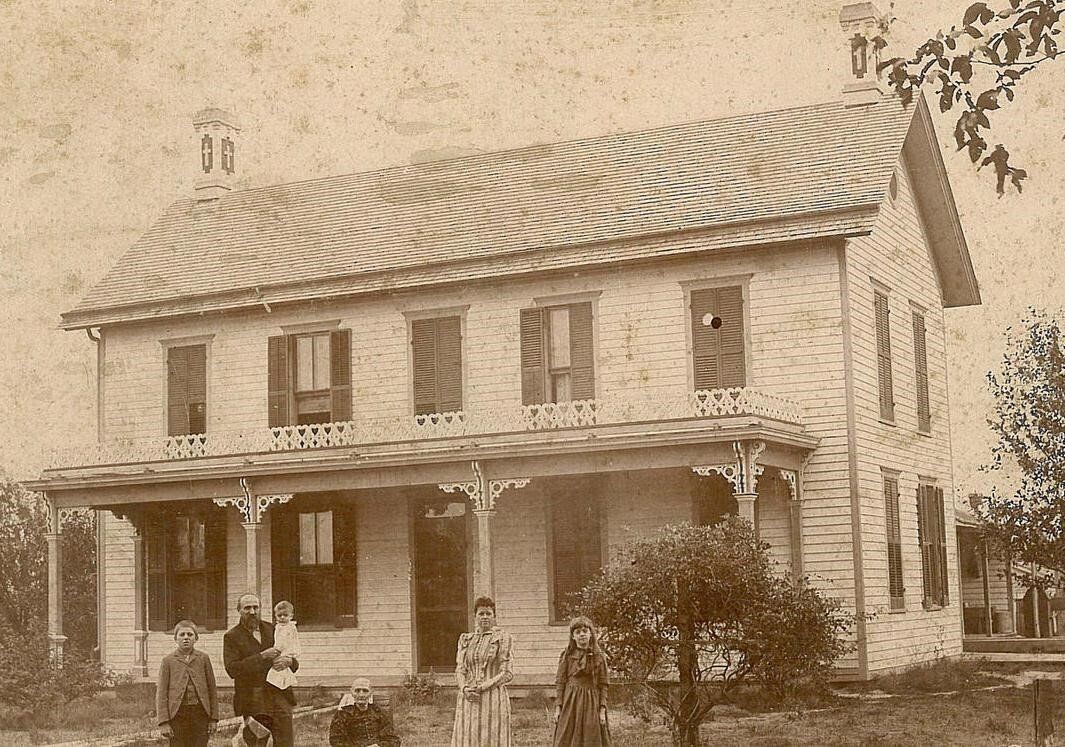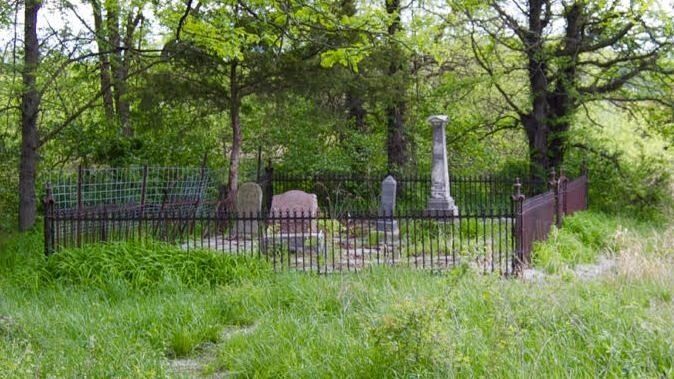Morley’s Settlement, Part 3

The 1885 Carter house was the childhood home of the writer and his siblings. (Photo courtesy of author)
On September 22, 1845, non-Mormon delegates from nine western Illinois counties, not including Hancock, met in Quincy, and adopted resolutions urging the Saints to leave Illinois. Brigham Young, now the leader of the Latter-day Saints, outlined the Saints’ agreement to leave in a September 24 letter published in the Quincy Whig. On October 2, the county representatives met in Carthage and accepted the Saints’ proposal to leave Illinois the following spring. The Saints formally adopted the proposal at a church conference a week later.
Sporadic burnings continued in October. A few residents had remained in Morley’s Settlement, Solomon Hancock among them, because, for some reason, his home had not been burned. These Saints were gathering in their crops, with state militiamen protecting them, and storing the crops at Hancock’s place until they could be hauled to Nauvoo.
Then, On November 15, Edmund Durfee returned from Nauvoo to Morley’s Settlement for a load of grain. He and relatives dug potatoes, gathered corn, and took these goods to Solomon Hancock’s where they went to bed for the night, with some boys sleeping in the barn. Nightriders torched straw near the barn, causing the boys to run out and the men to run from the house, whereupon all were fired upon from behind a log fence. The 57-year-old Edmund Durfee was hit in the neck by a bullet that killed him instantly.
Fourteen suspects were taken into custody the next day and charged with Durfee’s murder. Because the murder had occurred during the night, eyewitness identification was deemed unreliable, and the suspects were released. Governor Thomas Ford later wrote in his “History of Illinois” that “The perpetrators of this murder were arrested and brought before an anti-Mormon justice of the peace and were acquitted, though their guilt was sufficiently apparent.”
There were periodic burnings during November, but after the Durfee murder the violence subsided and in January and February 1846, the Saints started leaving Nauvoo, crossing the Mississippi River into Iowa. After an anti-Mormon posse had seized Nauvoo in late 1846, most of the Saints were gone.
Joining the exodus West was Hannah Carter, leaving behind her husband John, who still refused to join the church. She was sealed, as the term is, to Isaac Morley on January 22, 1846, and she today rests in the cemetery of Provo, Utah. Her Mormon children joined her on the trek West.
John Carter stayed on at the Carter farmstead amid the remains of Morley’s Settlement. He died in 1852. The year before, Philip Libby Carter, the lone son who refused to join the new religion, came out from Lowell, Massachusetts, and took over the farmstead. With him were his wife, Martha Eames York, and their son Charles, who was born in Lowell in 1846. Philip Libby Carter died at the Carter place in 1876. Charles built a new two-story frame house there in 1885, two rooms of which were fashioned from an earlier log building.
The Carter farm, or Carter Hill as it was known around Tioga and Lima, was sold to a neighboring farmer in 1956. Today nothing remains except a small family cemetery in which Philip and Martha Carter and Martha’s sister Melissa, and Charles and Marietta Carter are buried. There are hundreds of Mormon descendants of John and Hannah Carter and their children, and each year a few visit the farm site.
Later Carter relatives describe a small, dilapidated log building far over in one field as the Mormon schoolhouse. Farm tools were stored in it. Each spring bits of brick were plowed up in the depressed side of a clay hill assumed to be the site of brickmaking. They told of seeing the foundations of old houses along the lane they walked to the old Crescent School a mile away on what is now the blacktop from Illinois 96 to Tioga. A portion of that lane was said to be Morley Town’s “main street.” Pieces of china, glass or odds bits of metal were often found in the vicinity.
Professor William Hartley is a descendant of Edmund Durfee, the one Saint killed at Morley’s Settlement. His history of the settlement, upon which this writer relied, was printed in 1997 in conjunction with the placing of a marker at the southwest edge of Tioga to commemorate Morley’s Settlement. His account is from the perspective of a faithful Latter-day Saints historian. A counter-perspective is found in a history of the era written by John Hallwas of Western Illinois University and Roger Launius, chief historian at NASA, in a book titled “Cultures in Conflict” published in 1995 by Utah State University Press.
Their book summarizes how the Mormon myth of idealized, persecuted innocence and the American myth of an open, democratic culture collided at a time of religious revival. “The identity of the Saints was symbolized by the expanding separatist theocracy of Nauvoo,” they write. “Unfortunately, by persisting in their efforts to build a theocracy, the Mormons aroused the fear of despotism in those whom they called Gentiles, and under the pressures of political anxiety and social polarization, myth eventually led to counter-myth. The non-Mormons in turn demonized the Saints while viewing themselves as the virtuous defenders of their highest ideal, democracy. The results were a massive failure of tolerance, a loss of commitment to the common good, and a conflict fueled by fear.”
Professor Hartley says in his history that the Latter-day Saints at Morley’s Settlement did not turn on their attackers but did, in fact, to use the phrase from the Gospel of Matthew, “turn the other cheek.” It is reasonable to suggest that forceable resistance to the mobs in Hancock County would have destroyed the Saints as a religious entity. Instead, the Saints left Illinois to find their Zion in the West and became one of the world’s fastest growing sectarian denominations.
Joe Conover was the editor of The Herald Whig 1983-2001. John and Hannah Carter were his great-great-great grandparents.
The Historical Society of Quincy and Adams County is a non-profit organization dedicated to preserving local history. This column’s authors are society members and historians. The Herald-Whig’s website,
www.whig.com
, carries each column and includes sources. For information visit hsqac.org or call 217-222-1835.
Sources
Ford, Thomas. A History of Illinois, 2 vols. Chicago: Lakeside Press, 1946 reprint.
Hallwas, John E. and Roger Launius. Cultures in Conflict: A Documentary History of the Mormon War in Illinois. Logan, Utah: Utah State University Press, 1995.
Hancock County Historical Society and Bicentennial Commission. Historic Sites and Structures of Hancock County, Illinois. Carthage, IL, 1979.
Hartley, William G. “The 1845 Burning of Morley’s Settlement and Murder of Edmund Durfee.” Salt Lake City, Utah: Primer Publications, 1997.
“John and Hannah Knight Libby Carter Family Organization Blog.”
https://johnandhannahcarter.blogspot.com
“Mormon Disturbance.” Quincy Whig, September 17, 1845, 2.
“Welcome to Carterville USA!”
https://www.carterville.com

The Carter family cemetery is still visited each year by descendants. (Photo courtesy of author)






